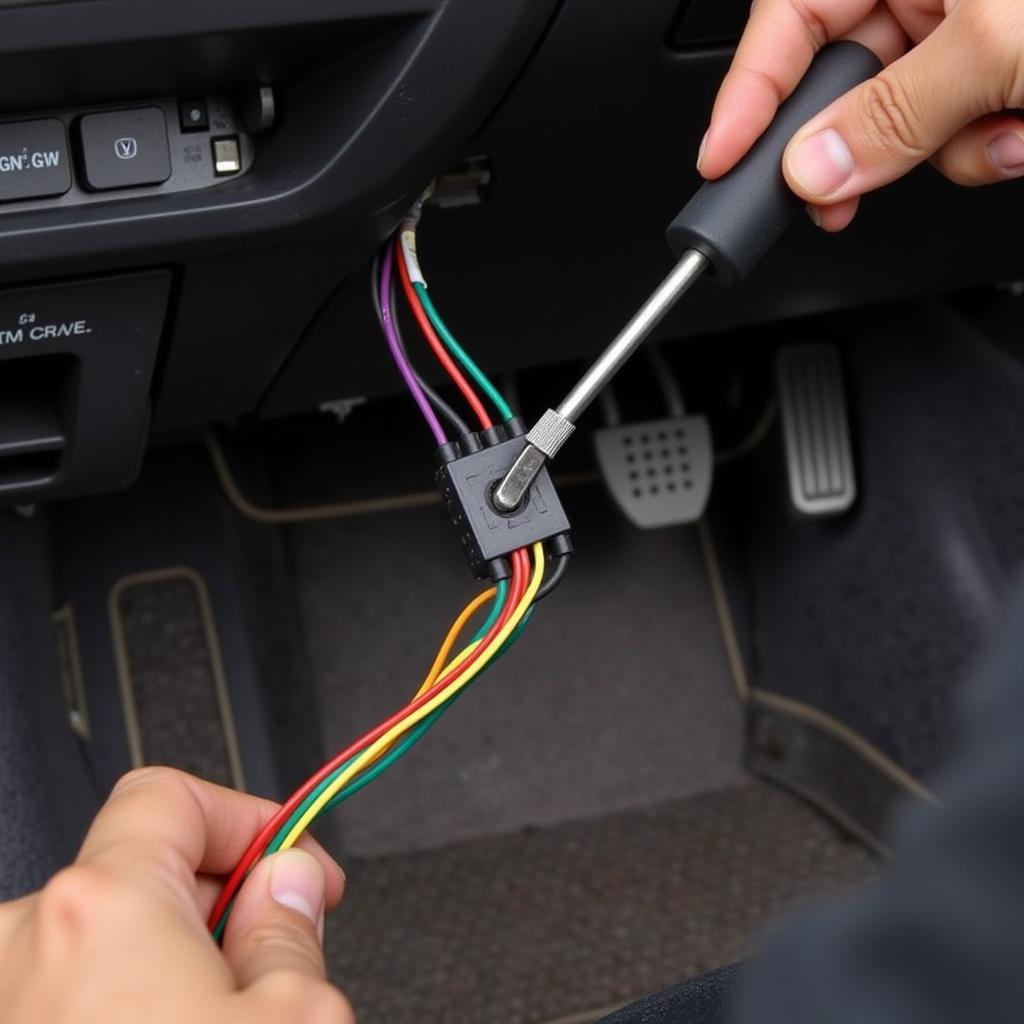A brake light warning on your 2006 Honda Civic dashboard means one or more of your brake lights aren’t working. This is a serious safety concern as it alerts other drivers that you’re slowing down or stopping. Ignoring this warning could lead to accidents, so it’s crucial to diagnose and fix the problem promptly. This article will guide you through the common causes of a “2006 Civic brake light warning” and provide practical solutions to get you back on the road safely.
Common Causes of a 2006 Civic Brake Light Warning
Several culprits could be triggering your 2006 Honda Civic’s brake light warning. Here are some of the most common:
- Burnt-out Bulbs: Just like any other light bulb, your brake light bulbs have a limited lifespan and can burn out over time. This is the most frequent reason for the warning light to appear.
- Blown Fuse: A blown fuse in your car’s electrical system can disrupt the power supply to your brake lights, causing them to malfunction.
- Faulty Brake Light Switch: The brake light switch, located behind your brake pedal, activates your brake lights when you press the pedal. If this switch malfunctions, your brake lights might not function correctly.
- Wiring Issues: Damaged or corroded wiring in your car’s electrical system can interrupt the signal between your brake pedal and brake lights, leading to illumination problems.
Troubleshooting the Brake Light Warning
Before heading to a mechanic, there are several things you can check yourself:
1. Inspect the Brake Light Bulbs
- Visual Check: Park your Civic in a well-lit area or have someone help you by pressing the brake pedal while you observe the lights from behind. Check if any of the brake lights are out.
- Bulb Replacement: If you find a burnt-out bulb, replace it with a new one of the correct type. Brake light bulbs are inexpensive and easy to find at auto parts stores.
2. Check the Fuse Box
- Locate the Fuse Box: Consult your Civic’s owner’s manual to locate the fuse box. It’s typically under the dashboard or in the engine bay.
- Identify the Brake Light Fuse: The owner’s manual will also indicate which fuse corresponds to your brake lights.
- Inspect the Fuse: Carefully remove the fuse and examine it. A blown fuse will have a broken wire inside.
- Replace if Necessary: If the fuse is blown, replace it with a new one of the same amperage.
3. Brake Light Switch Inspection
While you can visually inspect the brake light switch for obvious damage, testing it often requires a multimeter and some mechanical knowledge. If the bulbs and fuse are okay, it’s best to consult a mechanic to diagnose and replace a faulty brake light switch.
4. Seek Professional Help for Wiring Issues
Diagnosing and repairing wiring problems in your Civic’s electrical system is best left to qualified technicians. Attempting to fix wiring issues yourself can be dangerous and could further damage your vehicle.
When to Contact a Mechanic
If you’ve checked the bulbs, fuse, and still encounter the “2006 Civic brake light warning,” it’s time to schedule an appointment with a trusted mechanic. They have the expertise and tools to diagnose more complex problems like a malfunctioning brake light switch or underlying wiring issues.
“Addressing a brake light warning promptly ensures your safety and the safety of others on the road,” says John Smith, Senior Automotive Electrician at ABC Auto Repairs. “Don’t delay in getting it checked out by a professional if you can’t resolve the issue yourself.”
 Mechanic Inspecting Car Wiring
Mechanic Inspecting Car Wiring
Conclusion
A “2006 Civic brake light warning” shouldn’t be ignored. Addressing the issue promptly is crucial for your safety and the safety of others on the road. By understanding the common causes and following the troubleshooting steps outlined in this article, you can often resolve the problem yourself. However, don’t hesitate to seek professional help from a qualified mechanic if you encounter any difficulties or suspect a more complex issue.
